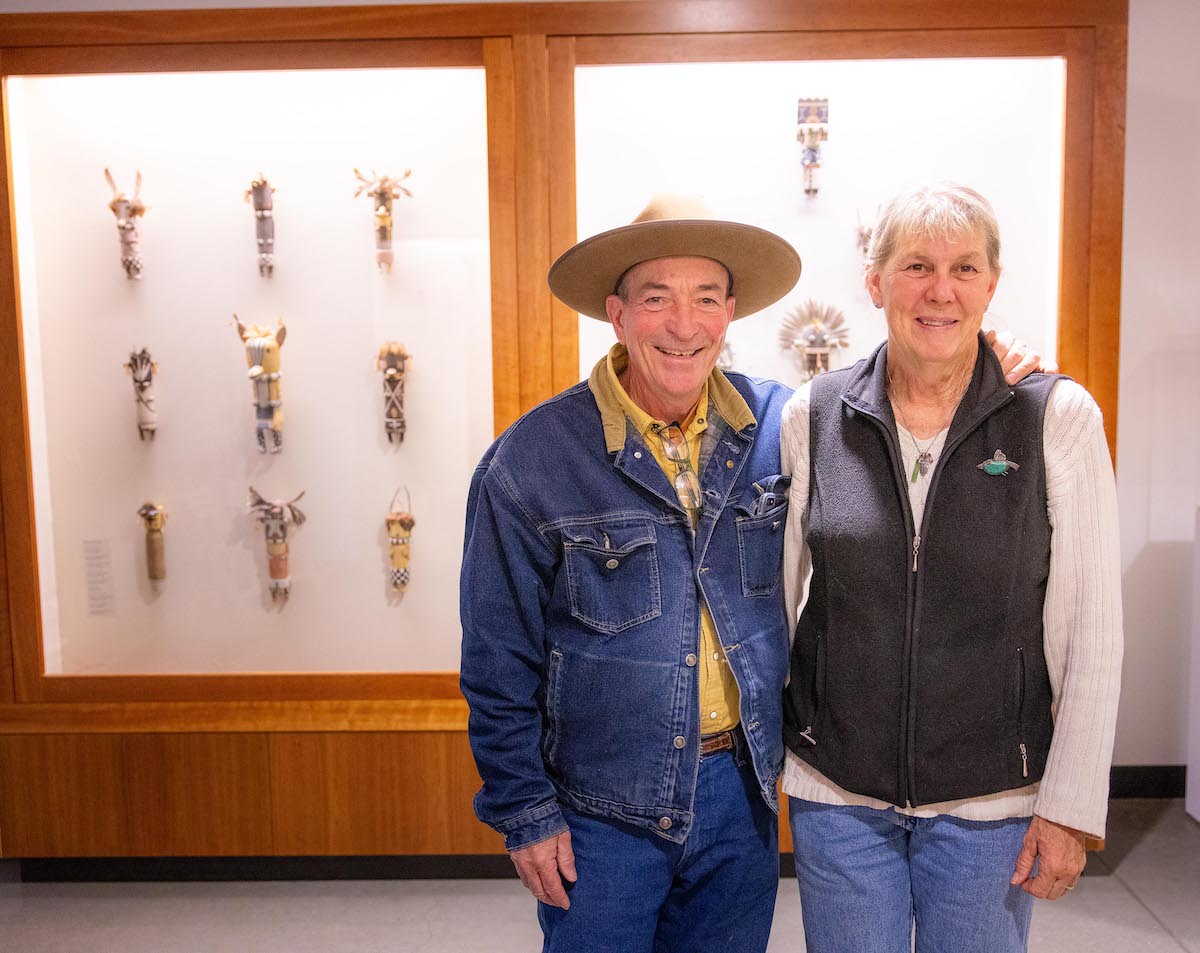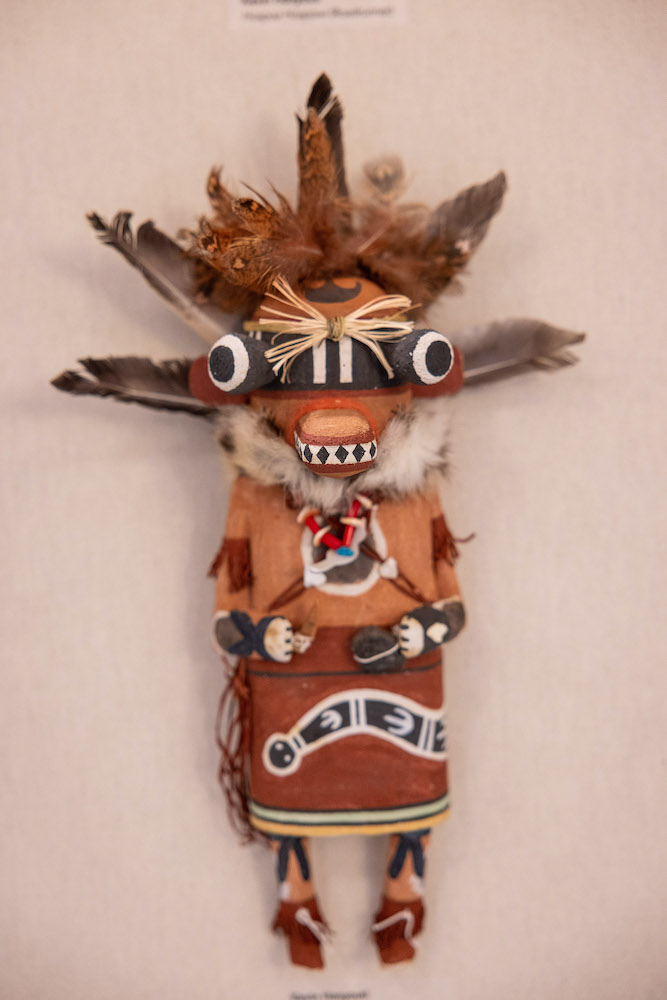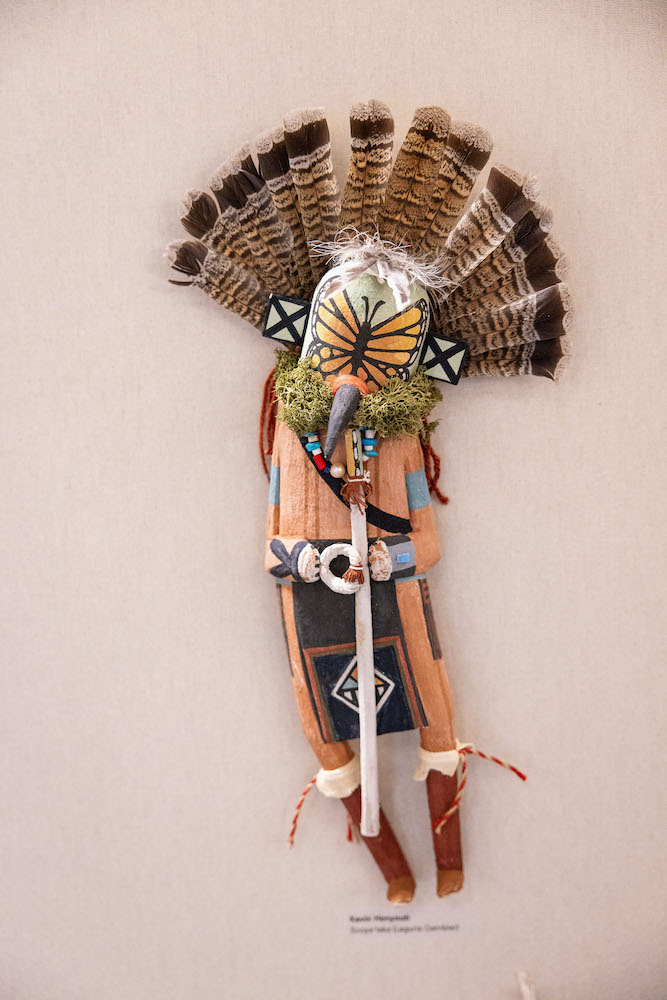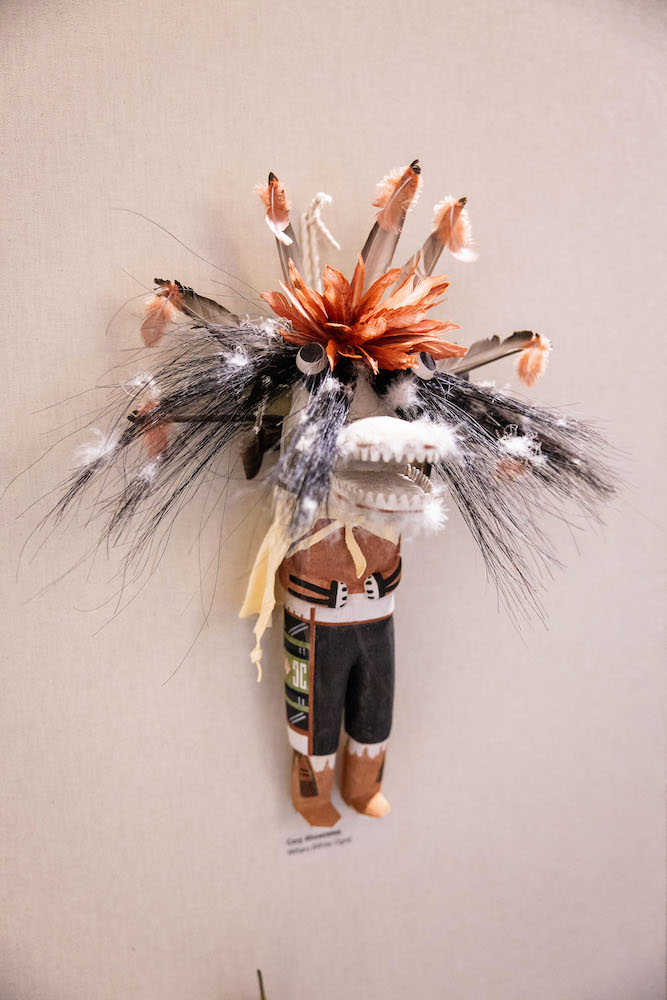Exhibit Highlights Traditional Hopi Katsina Dolls

Hopi Katsina dolls, carved and colorfully decorated wooden figures, are more than just beautiful works of art: They represent Katsinam spirits believed to bring blessings of good health, growth and fertility. A unique exhibition, celebrating the resurgence of a traditional carving method, features dozens of the Katsina (or “Kachina” to non-Hopi people) dolls and is open through May 4 in the lower level of the Westmont Ridley-Tree Museum of Art. The exhibition draws from local collectors, including local artists Wesley and Donna Anderegg, and includes work by four carvers, whose pieces are available for purchase.
Traditionally, young Hopi children receive these dolls during ceremonies and dances throughout the calendar year in conjunction with planting, harvesting and celebrations. The dolls, which feature hundreds of characters, also serve as educational tools teaching children about each specific Katsina spirit, which include all things in the universe, rocks, stars, animals, plants, weather and more.
Beginning around 1900, as tourists began to venture into Hopi and other Native American lands, the dolls became highly sought-after collectables. Hopi carvers made and sold the dolls, sharing the rich cosmology of the Hopi people.
Traditional Hopi Katsina dolls take shape from the roots of cottonwood trees. Like the Hopi, these trees live in an arid climate and grow only near stable sources of water. Although the Navajo Nation completely surrounds it, the Hopi Reservation in northeastern Arizona is believed to be the oldest continuously inhabited land in the U.S., with the Hopi settling there between 900 and 1000 A.D.

(Knife Sharpener)

(Laguna Gambler)

The four artists whose work is for sale include Cory Ahownewa, who serves as a cultural ambassador at the South Rim of the Grand Canyon; Kevin Honyouti, the youngest carver on display in the exhibition, who learned the craft from his father; Ed Seechoma, who is an award-winning Hopi master carver and lives in the village of Hotevilla on the Third Mesa; and Cordell Naseyoma also of the Hopi Third Mesa village of Hotevilla.
The exhibition is of special interest to Chris Rupp, Westmont curator and art collections manager, who grew up in Arizona and from a young age had a strong interest in Native American culture. “My father and I visited petroglyph sites and explored remote ruins of ancient settlements, which he occasionally located from the air while on flights as an aerial photographer,” Rupp says.
Rupp’s interest in Katsina dolls grew out of his friendship with the Andereggs (Wesley also grew up in Arizona). “I am struck by their visual power, their bold colors and elaborate decorations,” Rupp says. “As a ceramic artist I am drawn in by their handcraftedness — they are so carefully carved, painted and crafted, yet the hand is evident in their production. While some are intended to represent frightening characters, such as ogres, they tend to have a friendly quality. They are endearing much like a cast of characters from a storybook or play. While their meaning and cultural significance does not spring from my own culture, I have a deep admiration for the Hopi people and these characters that they bring to life through their carving. I have even found a place in my home for a few of them to reside.”






